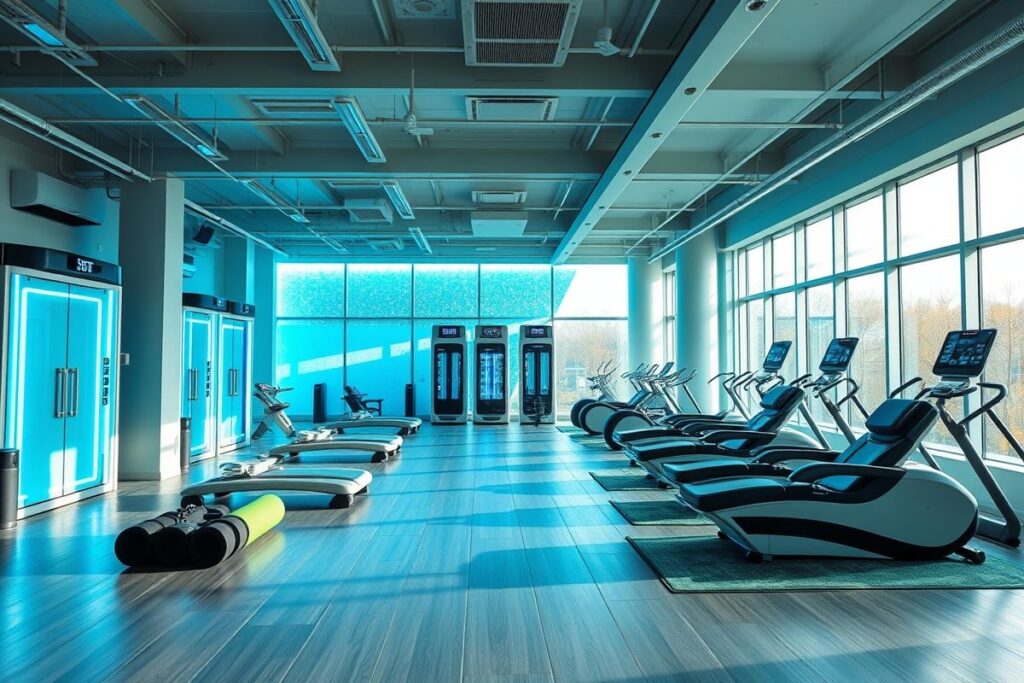Explore Recovery Gyms Like a Pro: 10 Clues

Stepping into the world of recovery gyms can feel like navigating a new galaxy. Cryotherapy chambers, compression boots, infrared saunas…it’s a lot to take in! Whether you’re a seasoned athlete looking to optimize performance, a weekend warrior nursing a nagging injury, or simply curious about the benefits of active recovery, understanding the landscape of recovery gyms is key. This guide will equip you with 10 essential clues to help you explore recovery gyms like a seasoned pro, ensuring you maximize your recovery and get the most out of your investment.
Understanding Your Recovery Needs
Identifying Your Goals
Before diving into the world of recovery gyms, take a moment to define your recovery goals. Are you looking to reduce muscle soreness? Improve flexibility? Speed up injury recovery? Identifying your specific needs will help you choose the right gym and utilize its offerings effectively. Consider what aspects of your training or daily life contribute most to your recovery needs.
Pinpointing your goals will also allow you to communicate effectively with the gym staff. They can help you personalize a recovery plan tailored to your specific needs and guide you toward the most appropriate modalities. Clearly defined goals are the cornerstone of a successful recovery journey.
Think about your budget and the time you can dedicate to recovery. Some modalities require more time and financial investment than others. A clear understanding of your resources will help you make informed decisions and choose a gym that aligns with your lifestyle.
Researching Available Modalities
Recovery gyms offer a wide range of modalities, from traditional methods like stretching and foam rolling to cutting-edge technologies like cryotherapy and red light therapy. Researching these options beforehand will allow you to make informed decisions about which ones best suit your needs. Understand the benefits and potential drawbacks of each modality.
Look for gyms that offer a variety of options. This will allow you to experiment and find what works best for you. A diverse selection of recovery tools can also address different aspects of recovery, offering a more holistic approach. A broader range often allows for greater customization.
Consider the scientific evidence supporting each modality. While some techniques have extensive research backing their effectiveness, others may be based on more anecdotal evidence. Understanding the science behind each modality can help you make more informed choices about your recovery plan. Prioritize evidence-based modalities.
Evaluating Recovery Gyms
Assessing the Facilities
When evaluating a recovery gym, pay close attention to the cleanliness and overall condition of the facility. A well-maintained environment is crucial for a positive recovery experience. Look for clean equipment, organized spaces, and a generally hygienic atmosphere. Cleanliness reflects professionalism and care.
Check the quality and availability of the equipment. Is the equipment in good working order? Are there enough units available to avoid long wait times? These factors can significantly impact your recovery experience. Adequate equipment availability ensures efficient use of your time.
Observe the layout and overall ambiance of the gym. Is it a relaxing and inviting space? Does it feel comfortable and conducive to recovery? The environment plays a crucial role in your overall experience. A calm and welcoming atmosphere promotes relaxation and recovery.
The Importance of Qualified Staff
The staff at a recovery gym should be knowledgeable and experienced in the various modalities offered. They should be able to answer your questions, provide guidance, and ensure you’re using the equipment correctly and safely. Look for certifications and relevant experience. Qualified staff can provide personalized guidance.
Observe how the staff interacts with clients. Are they attentive and helpful? Do they create a welcoming and supportive environment? The staff’s attitude can significantly impact your overall experience. Friendly and knowledgeable staff enhances the recovery experience.
Inquire about the staff’s training and continuing education. The field of recovery is constantly evolving, so it’s important that the staff stays up-to-date on the latest research and techniques. Ongoing training demonstrates a commitment to excellence.
Maximizing Your Recovery
Creating a Personalized Plan
Working with the gym staff to create a personalized recovery plan is essential for achieving optimal results. A tailored plan takes into account your individual needs, goals, and preferences. Collaboration with the staff ensures a targeted approach. Consider your current fitness level and limitations.
Be open to trying different modalities and adjusting your plan as needed. What works for one person may not work for another. Experimentation is key to finding the most effective recovery strategies for you. Flexibility allows for adjustments based on your body’s response.
Track your progress and make note of what works best for you. This information will be valuable in refining your recovery plan over time and maximizing your results. Monitoring progress allows for data-driven adjustments.
